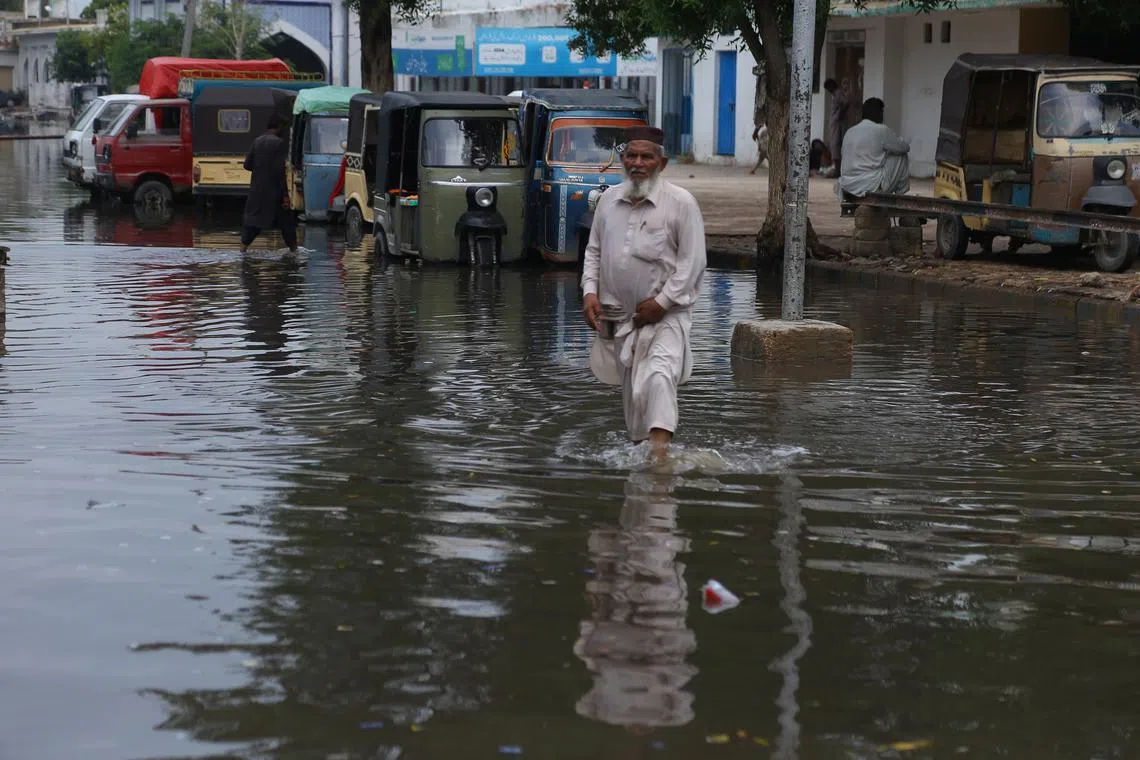Brutal monsoon season kills at least 1,860 in India and Pakistan
Sign up now: Get insights on Asia's fast-moving developments

A man wading through flood waters after torrential rain in Hyderabad, Pakistan, on Aug 20.
PHOTO: EPA
Follow topic:
MUMBAI – A deadly monsoon season has claimed at least 1,860 lives in India and Pakistan, with flash floods, landslides and inundated cities exposing the region’s growing vulnerability to climate-related disasters.
As the monsoon continues, heavy rain has left scenes of devastation across the sub-continent.
A sudden downpour in the hilly Indian state of Uttarakhand washed away an entire village in August, while a cloudburst killed around 60 in Jammu and Kashmir.
Life in Mumbai, India’s financial hub, came to a standstill this week as roads turned into canals, and in Pakistan, the Khyber Pakhtunkhwa province saw 180 deaths in a day.
Climate change is intensifying South Asia’s monsoon, a seasonal phenomenon that typically brings relief to farmers but increasingly carries severe consequences.
Rising global temperatures are ramping up the frequency and intensity of extreme weather events such as floods, droughts, cyclones and heatwaves.
With weeks of the monsoon season still remaining, the death toll could rise further.
Rainfall in the country’s north-western region has been 12 per cent above normal so far, and the India Meteorological Department (IMD) has predicted “heavy to very heavy” downpours at several locations this week.
India has reported 1,109 deaths since late May, while 759 people have died in Pakistan since June 26, according to official figures from the neighbouring countries.
Many victims drowned, while others died in landslides or collapsed homes.
In India alone, drowning and floods accounted for 484 and 116 deaths respectively, the data showed, while 50,000 houses have been damaged, affecting hundreds of thousands of people.
Inadequate urban planning has compounded the crisis, with the authorities struggling every year to manage the situation.
Unregulated construction, poor maintenance of sewer systems and swelling populations have left many cities and towns vulnerable to flooding even when rainfall is not extreme, exposing chronic under-preparedness by the local authorities.
In the five days to Aug 20, the Santacruz weather station in Mumbai recorded 875mm of rain, compared with 382mm during the entire month of August 2024, according to IMD data.
Mumbai is highly prone due to its coastal location. Past disasters, such as the catastrophic floods in 2005 that killed more than 400 people, have shown how fast the city’s roads, businesses, and neighbourhoods can grind to a halt when heavy precipitation overwhelms drainage systems. Bloomberg

